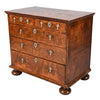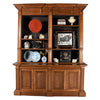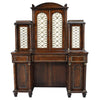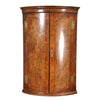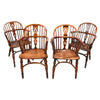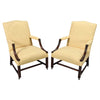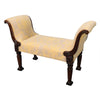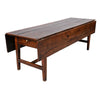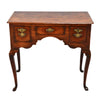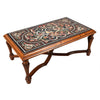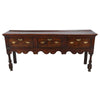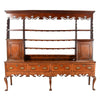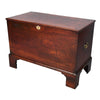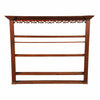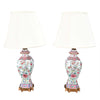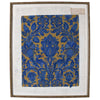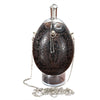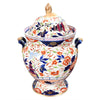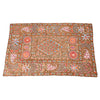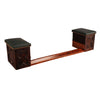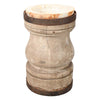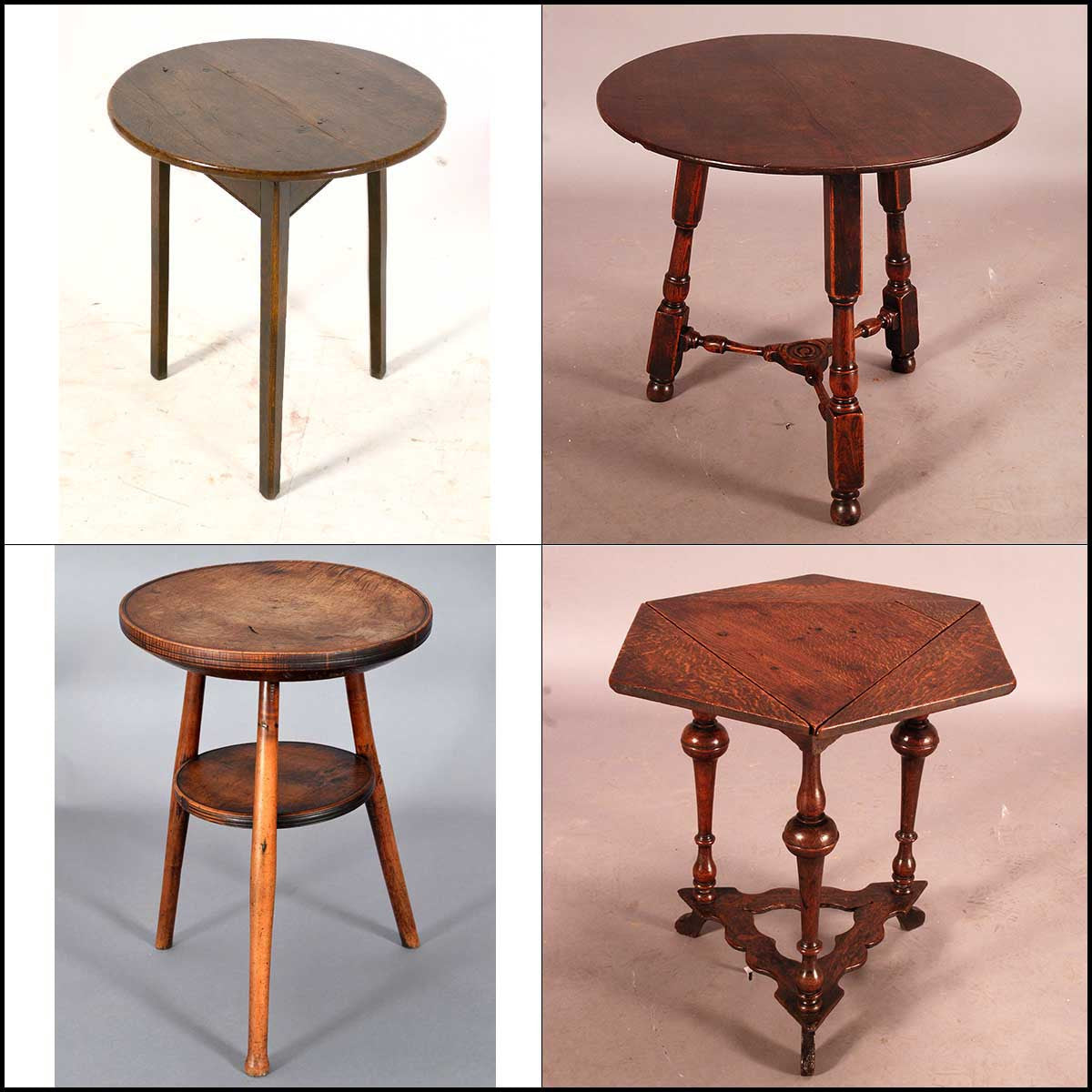
Cricket Tables and Crickets
As an exercise, let’s compare cricket tables. The term “cricket table” refers to a country table with three legs and typically a round top (although you will find one below with a hexagonal top, and we once had one with an 11-sided top). This form predates and should not be confused with the tripod table which you’ll see most often in mahogany. The three-legged design allowed the table to rest with stability on uneven dirt and stone floors. The oral tradition offers a few different explanations for why the label "cricket" is applied to these tables. The first is that they were brought out on to the lawns for use by spectators as they watched cricket matches. The three-leg design would have been well-suited for use on outdoor terrain. There are several examples in 18th Century art showing indoor furniture that has been dragged out onto the lawn. An alternative theory is that the three-legged form resembles the three stumps and bails of a wicket in the game of cricket. This seems plausible. The third (and least likely) explanation I’ve heard holds that the 3-legged form resembles the insect we call a cricket. Of course, crickets have six legs. I’m not buying it. In any case, we may never know the true origins of this vernacular term.
Back to the matter at hand:
Exhibit A:
This first cricket table is about as typical as it gets. It’s made of oak, stands on straight legs connected to an apron just below the round top. This could be considered the standard form of cricket table. The color and surface are good but not great. There is nothing at all wrong with this table, but there is also nothing special about it.
Exhibit B:
This table starts to branch off from the norm in a few ways. We will award a point for the top being a single board (even though it has a repaired split); another point for being walnut as opposed to the more common oak tops. The legs are not only splayed but partially turned with a central baluster shape and bun foot. The turned stretchers are arranged in a Y-shape that is less common than those arranged in a triangular or T-shape. And the turned roundel in the center where the stretchers join is a lovely little flourish.
Exhibit C:
This table departs even further from the standard in many pleasing ways. First, the table is made of sycamore which is why it has such a lovely, paler color and a very fine, hair-like grain pattern. The top is very thick (at least 2.25”) which allows the legs to be joined directly into the underside and eliminating the need for the rails that form an apron on other tables. I find this lends the table more of a sculptural form. In addition, this thick top is turned to have a slightly dished top and incised rings around the outside. The shelf is also similarly thick and also similarly turned. Contrast this with the more typical triangular shelf that you’ll find and I’m starting to lose track of all the points I’ve awarded to this gem.
Exhibit D:
While this table is out of oak, it has several features that I have never seen on a cricket table. To name three: the William and Mary type of ball turning on the legs; the flat-shaped stretcher connecting the legs; the three flap leaves that drop to form a triangular top. While you can certainly find each of these features on other pieces of furniture, I think you’ll find it difficult to turn up a cricket table that has even one of them. This form appears to be an evolutionary dead end in vernacular furniture. Usually discovering these dead ends, it is obvious why they were never reproduced. However, I find this one to be completely charming and beautiful.
The exercise above deals mostly with obvious issues of form. Many of the finer points such as quality of construction, timber, patina, and color are just not readily apparent in a picture. Furthermore, the subtleties of proportion and overall aesthetic can be more elusive. However, if one pays close attention (as Albert Sack has encouraged within his field of American furniture), the differences should make themselves known.

